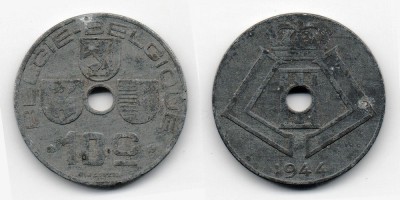The period of the Second World War is one of the most interesting periods for numismatists specializing in the history of the 20th century mints. 1944 is a year of significant changes in the economic system of the countries participating in the war. The military and economic rise of the anti-Hitler coalition, as well as the gradual weakening of the AOC countries, the loss of their economic potential and the occupied territories, led to the appearance of limited series of coins, which over time became unique.
During the wartime period in the USSR, coinage was a non-trivial task due to lack of resources and plant capacity. Therefore, all coins issued in the Soviet Union during the war period represent a collection value, due to the limited release and the small number of surviving copies.
In Leningrad, the state-owned enterprise KMD (Krasnoarmeysky Mint) issued a rare coin of 10 kopecks, made of nickel alloy. Accurate information about the circulation was not preserved.
In Japan, a rather unusual coin was issued with the year 1944 of coinage. The coin has a dignity of 10 September, released during the reign of the 124th Emperor of Japan, Hirohito. On the obverse in the form of hieroglyphs are depicted the years of the era of the emperor's reign, and on the reverse is placed the emblem of Japan, as well as hieroglyphs denoting the word "sen" and the denomination of the coin.
Norway in 1944, during the reign of King Haakon the 6th, issued a coin in denomination in the 5th era. The material from which the coin is made is iron. On the front side there is the coat of arms of Norway and the seal of the treasury, on the obverse of the coin the symbols of the coin’s dignity are minted. It was minted fairly regularly, but to our time few copies have been preserved.
 Russian
Russian English
English Deutsch
Deutsch Spanish
Spanish Português
Português













